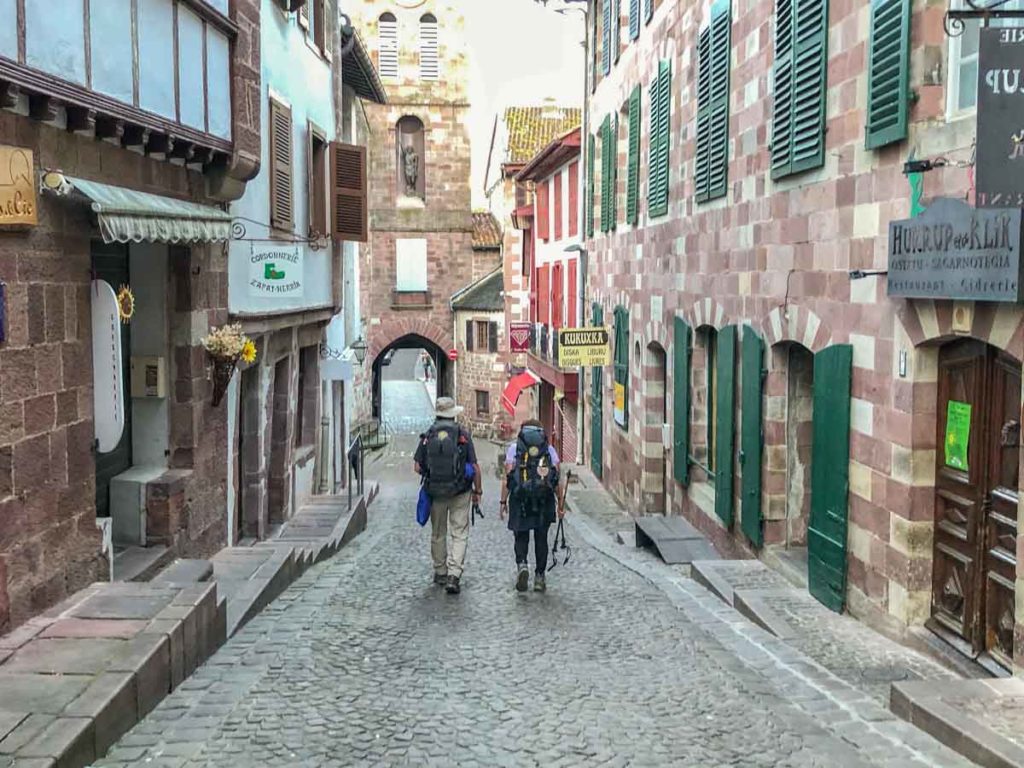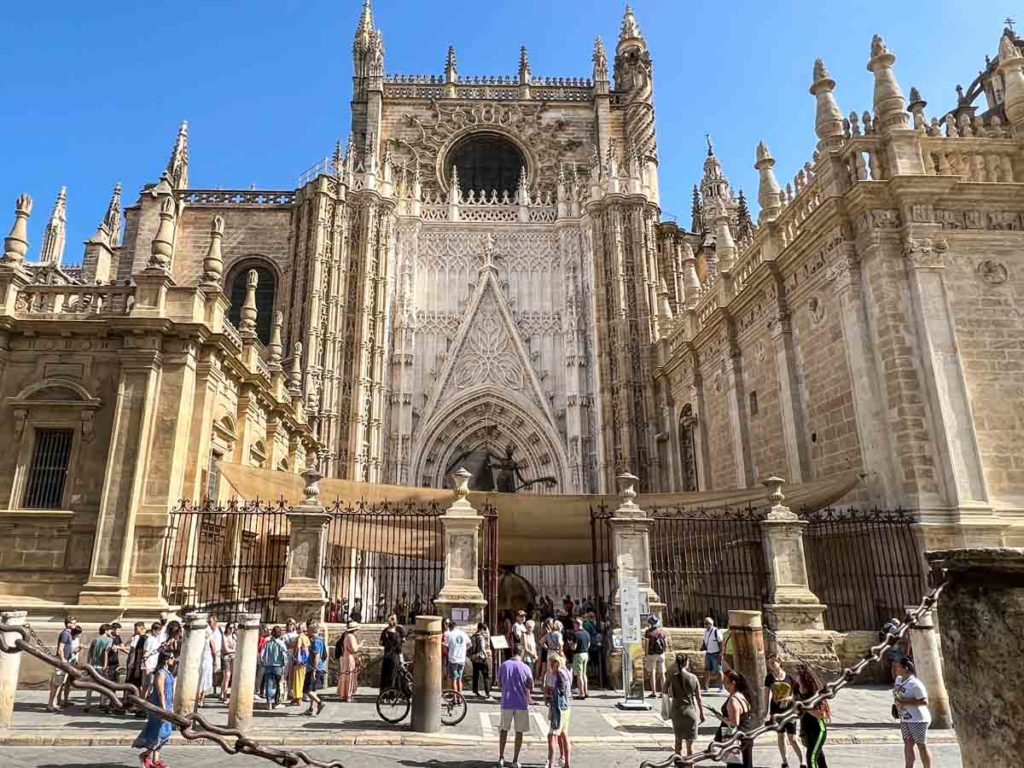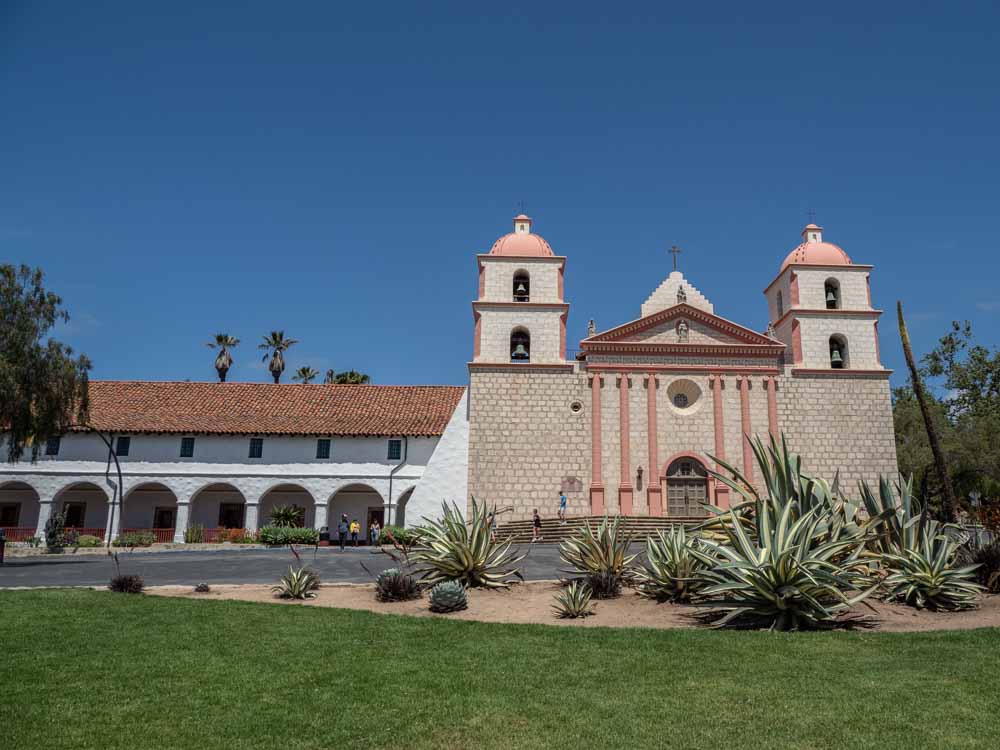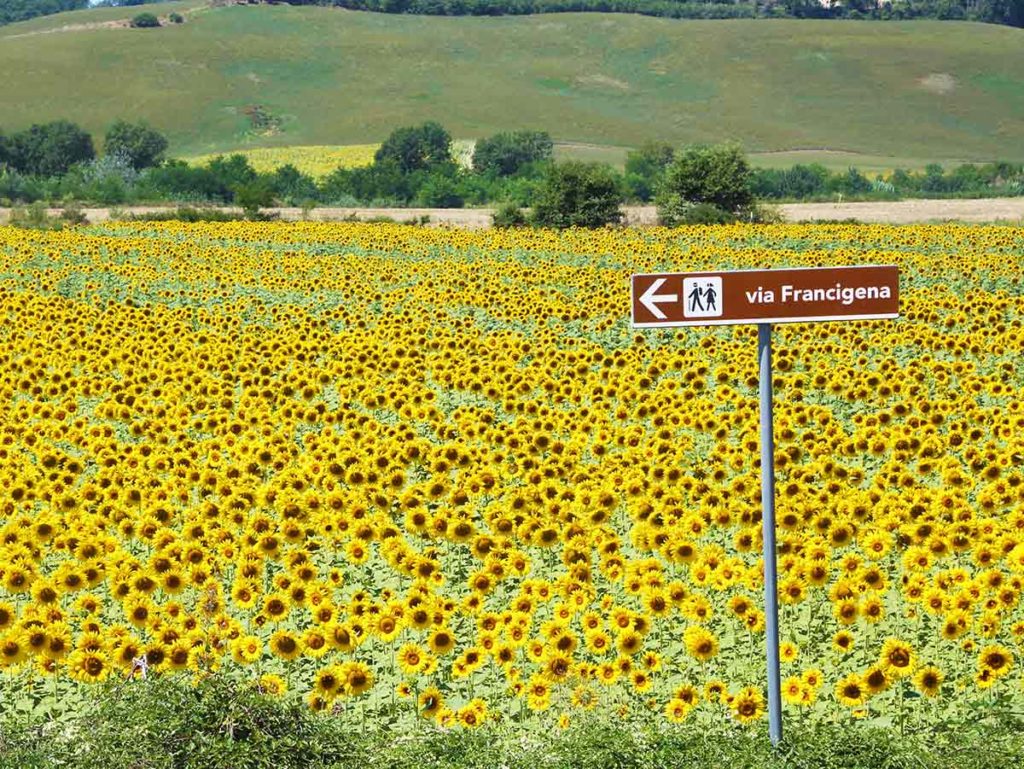Route Overviews for the Camino de Santiago
The Caminos Francés or Portugués are often the first Camino for most pilgrims. But by all means, they’re not the only way to get to Santiago de Compostela. In addition to the routes ending in Santiago, there are also numerous others throughout Europe and the world providing support and inspiration for pilgrims.
Maybe you’re wondering which route to take for your first pilgrimage, or you’ve already gone and are looking for more ideas. Either way, this resource will help you expand your awareness of other routes.

The map above sketches most of the routes originating on the Iberian Peninsula. Not pictured are also several routes from France that connect with either the Francés (Vía Podienses and Vía Vézelay) or the Aragonés (Arles route).
Of these, the Camino Francés is by far the most popular, covering 800 kilometers (~500 miles) from Saint-Jean-Pied-de-Port (St. Jean), France to Santiago de Compostela, Spain. Many people travel this distance, but there are also other popular starting points for the Camino Francés, including Pamplona, Burgos, León, Ponferrada and Sarria.
As you’ll note on map, there are also many other routes originating elsewhere in Spain, connecting with either the Camino Francés or the Camino Portugués. Still others avoid both of these routes and carve their own path.
The links below will help you decide which route is best for you. They are not meant to be exhaustive guides, but rather an overview to help you decide if you’d like to further explore a particular route.

The Top 6 Most Popular Camino de Santiago Routes
The link will take you to a more detailed description of each route.
Camino Francés (784 km from St. Jean to Santiago)
Camino Portugués (608 km from Lisbon or 233 kilometers from Porto to Santiago)
Camino del Norte (844 km from Irún to Santiago)
Camino Primitivo (302 km from Oviedo to Santiago)
Finisterre and/or Muxía (93 km from Santiago to Finisterre and/or Muxía)
Camino Inglés (107 km from Ferrol or 68 km from A Coruña to Santiago)
Other Camino Routes Originating in Spain & Portugal
Routes with Southern Origins
Vía de la Plata (from Sevilla to Santiago: 930 km on the Sanabrés via Ourense, or 944 km via Astorga on the Francés)
Vía de la Plata/Portugués (382 km variant from Zamora to Bragança, connecting to the Portugués)
de Madrid (323 km from Madrid to Sahagún, connecting to the Francés)
Camino Mozárabe (396 km from Granada to Merida, connecting to the Vía de la Plata)
Vía Augusta (173 km from Cadíz to Seville, connecting to the Vía de la Plata)
Camino de Levante (800 km from Valencia to Zamora, connecting to the Vía de la Plata)
Ruta de la Lana (700 km from Alicante to Burgos, connecting to the Francés)
Routes with Northern Origins
Camino Aragonés (160 km from Somport to Puente la Reina, connecting to the Francés)
Camino de Invierno (267 km from Ponferrada to Santiago via Montefort de Lemos.)
Camino del Salvador (145 km from León to Oviedo, connecting to the Primitivo)
Ruta del Túnel (211 km from Irún to Santo Domingo de la Calzada, connecting to the Francés)
Camí de Sant Jaume/Camino Catalán ( 270 km from Barcelona or El Port de la Selva to Montserrat, connecting with the Aragonés)
Ruta del Ebro (432 km from Deltebre-La Ràpita to Logroño, connecting to the Francés)
Camino Olvidado (523 km from Bilbao to Cacabelos)
Camino Batzán (110 km from Bayonne to Pamplona, connecting to the Francés )

Other Camino de Santiago Routes With French Origins
Via Podiensis (762 km from Le Puy-en-Velay to St. Jean, connecting to the Francés)
Voie Littorale (~350 km from Pointe de Grave, joining the Norte in Irún)
Via Lemovicensis (or Vézelay) (~900 km from Vézelay, first joining the Vía Podiensis and then the Francés in St. Jean)
Via Tolosana/Arles (778 km from Arles to Somport, connecting to the Aragonés)
Via Turonensis (1,021 km from Paris to St. Jean, connecting to the Francés)
Chemin Piedmont (517 km from Carcassonne to St. Jean, connecting to the Francés)

Other Pilgrimages Around the World
Many of these routes can be combined with a pilgrimage in Spain to earn the Compostela.
The United States
St. Augustine: Walking this Florida route allows pilgrims to add the distance to any of the Spanish Caminos if seeking a Compostela.
El Camino de San Antonio Missions: Walking this Texas route allows pilgrims to add the distance to any of the Spanish Caminos if seeking a Compostela.
The Santuario de Chimayó, New Mexico: During Semana Santa thousands of pilgrims journey to El Santuario de Chimayó, a tiny shrine in northern New Mexico. The destination of the pilgrims, El Santuario de Chimayó, is believed to hold the power to heal mind and body.
The California Missions Trail, During the colonization of California, the Spanish built a series of 22 missions from San Diego to Sonoma, a distance of 800 miles.
The United Kingdom
The Way of St. Andrews: St. Andrews is the patron saint of Scotland and the town where his relics were kept on the east coast of Fife overlooking the North Sea was established as a pilgrimage site over 1,000 years ago. There are eight routes that converge in St. Andrews.
Canterbury Cathedral: The Cathedral’s history goes back to 597 CE when St. Augustine arrived in Kent, having been sent from Rome by Pope Gregory the Great to bring Christianity to the Anglo-Saxons. There are two routes ranging from 90 to 153 miles.
The British Pilgrimage Trust: The British Pilgrimage Trust is a nonprofit organization dedicated to revitalizing the concept of pilgrimage in Britain. The site provides information on a network of more than 250 routes across Britain, including popular walks like St. Cuthberts, Old Way, Two Saints Way, St. Hilda’s Way and the Hadrian’s Wall Pilgrims’ Way.
The North Wales Pilgrims’ Way: The North Wales Pilgrims’ Way (Taith Pererin Gogledd Cymru) is a walking route of about 130 miles that runs along the northern coast of Wales. The route links ancient churches dedicated to the saints of the 6th century.
Anglesey Druids Way: This path in Wales covers 80 miles from Caernarfon Fort to Caer y Tawr. It hugs the coastline and was designed to heal the massacre of the druids by the Romans during the 1st c AD.
Anglesey Saints Way: This path is also in Welsh Anglesey and it covers 44 miles between the Penmon Priory and Holyhead. It’s been designed to celebrate the friendship between St Cybi and St Seiriol.
Ireland
Ireland Pilgrim Paths: Ireland boasts 12 major pilgrim paths spread throughout the country, from Donegal in the north to Cork in the south.
Poland
There are a series of routes in Poland considered part of the Way of St. James. There are 34 marked trails connecting pilgrim routes in Germany and the Czech Republic.
Norway & Sweden
St. Olav Ways is a network of pilgrimage paths, all leading to St. Olav’s burial place at Nidaros Cathedral, in Trondheim, Norway. One of the primary routes goes 580 km from Selånger, Sweden to Trondheim. But there are nine different paths that you can take.

Italy
The Via Francigena: This 2,000 km route begins in Canterbury, England and transits France and Switzerland before landing in Rome. It was first documented by a 10th-century English archbishop and is the ancient pilgrimage route starting in Canterbury. This site has good information on routing, accommodation and rules for receiving the “Testimonium” (the Via Francigena’s equivalent of a Compostela).
Via Postumia: The Italian path to Santiago de Compostela is 931 kilometers from Aquileia to Genoa through six regions of Italy: Friuli-Veneto-Lombardia-Emilia-Piemonte-Liguria.
Pan-European
The European Peace Walk: The European Peace Walk is a 550 km transnational, cross-border initiative set on creating an integrated tourist path along the borders of Central Europe. It starts in Vienna-Bratislava, and then passes Sopron, Szombathely, Maribor, Slovenj Gradec and Kranj before ending at the Mediterranean Sea in Trieste, Italy.
The Sultan’s Trail: This 2,500 km route runs from Vienna to Istanbul and is named after Sultan Suleiman I who ruled from 1520CE to 1566 CE in the powerful Ottoman Empire. The trail will lead you through nine countries: Austria, Slovakia, Hungary, Croatia, Serbia, Romania, Bulgaria, Greece, and Turkey.
Budapest to Santiago: As with Poland, this is not a single named path, but is a string of paths that connect Budapest, Hungary to Santiago, Spain. This long itinerary crosses five countries over a distance of more than 4,000 km. The path passes 15 UNESCO sites and is marked with yellow arrows.
Turkey
The Saint Paul Trail: The Saint Paul Trail follows the route walked by St. Paul on his first missionary journey in Asia Minor. It is a 500 km, way-marked footpath from Perge to Yalvac.
The Sufi Trail: The Sufi Trail is an 800 km hiking and biking trail from Istanbul to Konya.
Israel
The Jesus Trail: The Jesus Trail is a 65 km hiking trail from Nazareth to Capernaum, connecting important sites from the life of Jesus as well as other historical and religious sites.
Japan
The Shikoku 88 temple route is a 1,200 km circular pilgrimage, transiting temples, Buddhist sites and natural surroundings. The Shikoku tourism bureau offers a good overview with history, logistical information and links to other resources. And the Shikoku 88 site goes even deeper with profile maps, gear guides, transportation logistics and cultural guidance.
The Kumano Kodo pilgrimage is a sister-pilgrimage with the Camino de Santiago, and is on the UNESCO World Heritage List. Pilgrims who complete both the Camino de Santiago and the Kumano Kodo can obtain a special dual-pilgrim certificate.
Plan More of Your Camino
Join the community by becoming a member of American Pilgrims on the Camino, engaging with one of our more than 60 local chapters or joining our active Facebook group. And don’t forget to request your pilgrim credential from us!
- Use our pilgrimage planning FAQ to start getting ready for your trip.
- Then use our “what to expect along the Way” FAQ to get the scoop on what life is like on the trail, including the different types of Camino lodgings.
- We’ve also got resources for cyclists.
- And check out our list of guidebooks and inspirational memoirs.
Rev 11/6/2025

